Field of greens: Notes from the farm
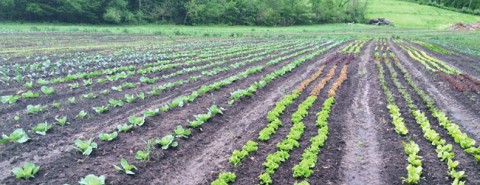
Every spring brings warm breezes, the undulating flight of returning songbirds, and the mad desire of the earth to clothe herself in green. By the time the summer solstice rolls around, plants’ chloroplasts are working overtime, and our farm explodes in a riotous symphony with variations on the color green.
Lately, I’ve been more mindful of all those shades of green. Because my father’s eyesight is failing, it is now my job to bring the dogs down the steep back hill to the bottomland vegetable field each evening and back up each morning. Overnight, they are on guard duty, protecting lettuce and other greens from the deer. Although those deer have plenty of sustenance in the woods, they can’t resist the all-you-can-eat salad bar of radicchio, endive, escarole, and some 50 varieties of lettuce laid out in inviting rows. Before we started bringing the dogs down, the deer would take a taste of this and a taste of that, nibbling the tender center out of each plant. From a distance, the row looked perfect, but up close you saw that each plant was just a circle of outer leaves enclosing thin air.
Read our latest issue or browse back issues.
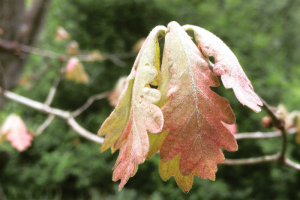 |
To thwart the deer’s gourmet impulses, the dogs and I travel each morning and evening through a world awash in chlorophyll. Most often we start at the hilltop, passing under the ancient white oak. (I’m not quite sure why it’s called white, given its glossy, deep green leaves; perhaps white refers to its light-colored, ash-gray trunk.) As the breeze ruffles the palm-sized leaves, shiny dark green on top and matte silver-green on the undersides, I remember when those leaves emerged newborn just a few months ago—a delicate, downy, silvery pink.
As I leave the stately oak and start down the steep, narrow path, the world becomes a lyrical study in viridescence, from the bright new green of multiflora rose leaves to the dark, almost metallic green of the hickory. As I walk, it strikes me that there’s a terrible paucity of words for all the shades of green, especially given that it’s the color of life.
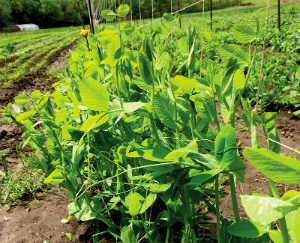 |
Life on earth would not exist without green plants, and plants are green mainly because of chlorophyll, the complex chemical crucial to photosynthesis. Photosynthesis, you may recall from high school biology class, is the process by which plants convert the energy of the sun into the carbohydrate fuel that powers them and all animals, including us. Think of the debt you owe chlorophyll the next time you have a cup of coffee or tea (both from plants) with cream (from an animal that eats plants) and sugar (another plant).
Because green plants are the foundation of the food web and all around us, I wonder that we do not have as many words for green as the Inuit are said to have for snow. In the herb bouquet on my table as I write are, for starters, dill green, sage green, tarragon green, lovage green, and mint green in three sub-shades—spearmint green, peppermint green, and mojito mint green. And every one of those greens is different, ranging from the silvery gray-green of sage to the electric gold-green of lovage.
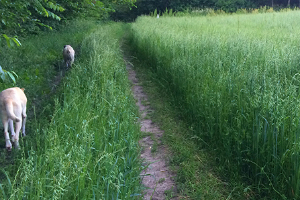 |
As the dogs and I reach the bottom of our descent down the back hill, a curtain of seven-foot-tall prairie grasses in shades of sea-blue-green-gray hides us for a few moments. Then we emerge into the rhubarb patch, and walk along a row of deep green elephant-ear leaves, standing tall on their bright red petioles. At the corner of the rhubarb patch, we hop over the tiny creek that drains rainwater from the ravine into the stream. Then the fallow field opens before us.
My brother Henry’s fields work hard growing vegetables for two years, and then they get two years off to rest and regenerate. Back in March, Henry tilled in the cover crops that had protected the soil from winter winds and rain and then seeded the fallow field in a mixture of legumes and grasses. By the end of May, the plants were armpit-tall, an enticing mixture of colors and textures, from the soft, velvety blue-green of clover and alfalfa to the pale, stiff stalks of orchard grass, rye grass, and oats. In early June we mowed the fallow field for the first cutting of hay. If all goes well, by the end of the season we should have two or three more cuttings.
Although we will bale the hay and use it to mulch the tomatoes, peppers, eggplant, kale, and potatoes, the fallow field is not working but resting. Or, perhaps more accurately, it’s on a working vacation. Each legume (alfalfa, crimson clover, red clover, berseem clover) is actually a solar-powered nitrogen fertilizer factory. The nitrogen-fixing bacteria that live on legume roots transform atmospheric nitrogen into a form that’s available for plants. In this way, Henry is able to grow his own nitrogen fertilizer rather than purchase synthetically produced nitrogen fertilizer made by burning immense amounts of fossil fuels. And while the field lies fallow and the soil is undisturbed, other microorganisms do their important underground work—multiplying and connecting, creating networks that go broad and deep, making the “glue” that holds healthy soil together and makes nutrients available to the vegetables that will grow here later.
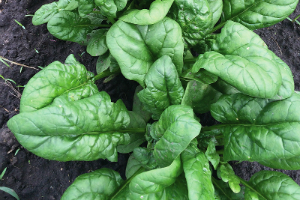 |
This year’s working field is on the other side of Walnut Creek, so the dogs and I wade across the rocky ford to enter the field just coming off its two fallow years and now exploding with verdant life. Just yesterday we harvested hundreds of crates of spinach green, arugula green, endive green, sorrel green, and lettuce green. I drink in these greens and am nearly drunk on them as I tie the dogs near doghouses positioned at opposite ends of the 200-foot-long beds. I give them a quick hug and thank-you before walking back through the patchwork field of greens.
In the strong searchlight of the setting sun, I can almost see the pulsing chlorophyll molecules dancing in each cell of each leaf of lettuce, kale, and chard, almost hear them playing their symphony of photosynthesis. Then the sun slips below the horizon, and the music fades as the silver slipper of a moon rises.






